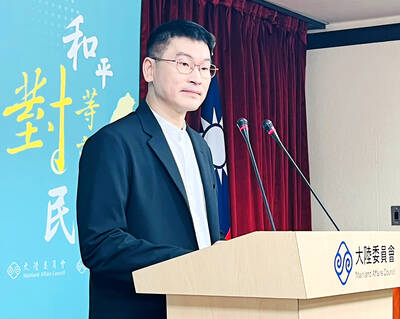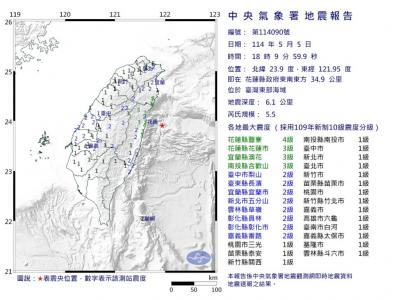European nations are selling dual-use military technology to China that may soon be used against Taiwan, a US congressional subcommittee has been told.
“All Chinese nonnuclear submarines and new combatant ships use European design naval engines, largely German-designed engines,” said Rick Fisher, senior fellow for Asian military affairs at the International Assessment and Strategy Center.
A similar situation exists with some helicopters, and the Chinese shipbuilding industry has bought state-of-the-art 3D ship design software, made in Spain, that is already helping Beijing “develop better combat ships.”
Fisher told a special hearing of the Europe, Eurasia and Emerging Threats Subcommittee of the House Foreign Affairs Committee that the sales were allowing China to expand its military more quickly than it would otherwise be able to do.
Fisher said China was building its military “tremendously” to wage war against Taiwan and to conquer the nation “perhaps early in the next decade.”
Such an attack could possibly engage US forces and reduce the US’ ability to aid Europe against threats “that are growing against them as well.”
Asked about mounting Chinese aggression towards Japan and in the South China Sea, Fisher said that if the US did nothing to counter the aggression, there was a danger that allies could be defeated in skirmishes.
“If our allies are undermined, if they lose confidence in their alliances with the United States, they have alternatives,” Fisher said. “In my opinion they will develop their own nuclear missiles.”
Fisher said that Japan, South Korea, Vietnam and Australia could all go nuclear “rather quickly.”
If that happens, the prospect of a skirmish escalating into a nuclear exchange with the US being drawn into a war is “real,” he said.
Fisher said that Washington had to support its friends and allies.
“We have to be very clear to the Chinese about what we consider unacceptable behavior,” he said.
“We have to make clear that we are there to back up our alliances, that we are there to support our long-standing friendship with Taiwan by selling them the systems they need to deter war,” Fisher said. “If we fail to do this, we are inviting conflict.”
Chairman of the subcommittee Republican Dana Rohrabacher said the hearing had been called to examine China’s “external posture” toward the states around it.
He said that Beijing had menaced, threatened and attempted to absorb Taiwan and had clashed “with virtually every bordering state.”
Director of the Population Research Institute Steven Mosher said that he was less worried about China’s capabilities than its intentions.
“I am concerned that China, which lacks transparency in terms of its military budget and in stating its intentions, is only emboldened by our careful and measured and nuanced, and oftentimes too quiet, responses to acts of aggression,” he said.

An essay competition jointly organized by a local writing society and a publisher affiliated with the Chinese Communist Party (CCP) might have contravened the Act Governing Relations Between the People of the Taiwan Area and the Mainland Area (臺灣地區與大陸地區人民關係條例), the Mainland Affairs Council (MAC) said on Thursday. “In this case, the partner organization is clearly an agency under the CCP’s Fujian Provincial Committee,” MAC Deputy Minister and spokesperson Liang Wen-chieh (梁文傑) said at a news briefing in Taipei. “It also involves bringing Taiwanese students to China with all-expenses-paid arrangements to attend award ceremonies and camps,” Liang said. Those two “characteristics” are typically sufficient

A magnitude 5.9 earthquake that struck about 33km off the coast of Hualien City was the "main shock" in a series of quakes in the area, with aftershocks expected over the next three days, the Central Weather Administration (CWA) said yesterday. Prior to the magnitude 5.9 quake shaking most of Taiwan at 6:53pm yesterday, six other earthquakes stronger than a magnitude of 4, starting with a magnitude 5.5 quake at 6:09pm, occurred in the area. CWA Seismological Center Director Wu Chien-fu (吳健富) confirmed that the quakes were all part of the same series and that the magnitude 5.5 temblor was

The brilliant blue waters, thick foliage and bucolic atmosphere on this seemingly idyllic archipelago deep in the Pacific Ocean belie the key role it now plays in a titanic geopolitical struggle. Palau is again on the front line as China, and the US and its allies prepare their forces in an intensifying contest for control over the Asia-Pacific region. The democratic nation of just 17,000 people hosts US-controlled airstrips and soon-to-be-completed radar installations that the US military describes as “critical” to monitoring vast swathes of water and airspace. It is also a key piece of the second island chain, a string of

The Central Weather Administration has issued a heat alert for southeastern Taiwan, warning of temperatures as high as 36°C today, while alerting some coastal areas of strong winds later in the day. Kaohsiung’s Neimen District (內門) and Pingtung County’s Neipu Township (內埔) are under an orange heat alert, which warns of temperatures as high as 36°C for three consecutive days, the CWA said, citing southwest winds. The heat would also extend to Tainan’s Nansi (楠西) and Yujing (玉井) districts, as well as Pingtung’s Gaoshu (高樹), Yanpu (鹽埔) and Majia (瑪家) townships, it said, forecasting highs of up to 36°C in those areas